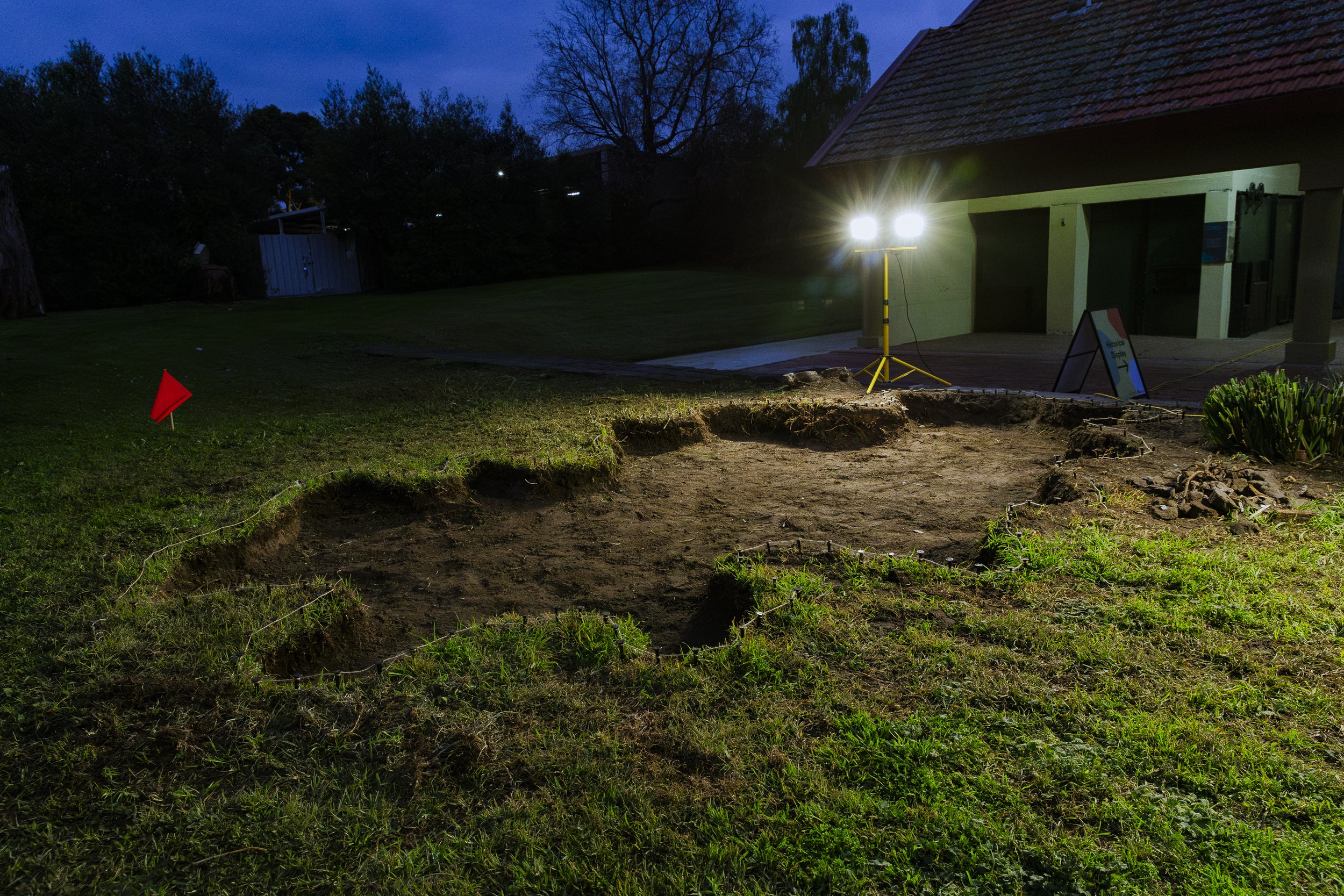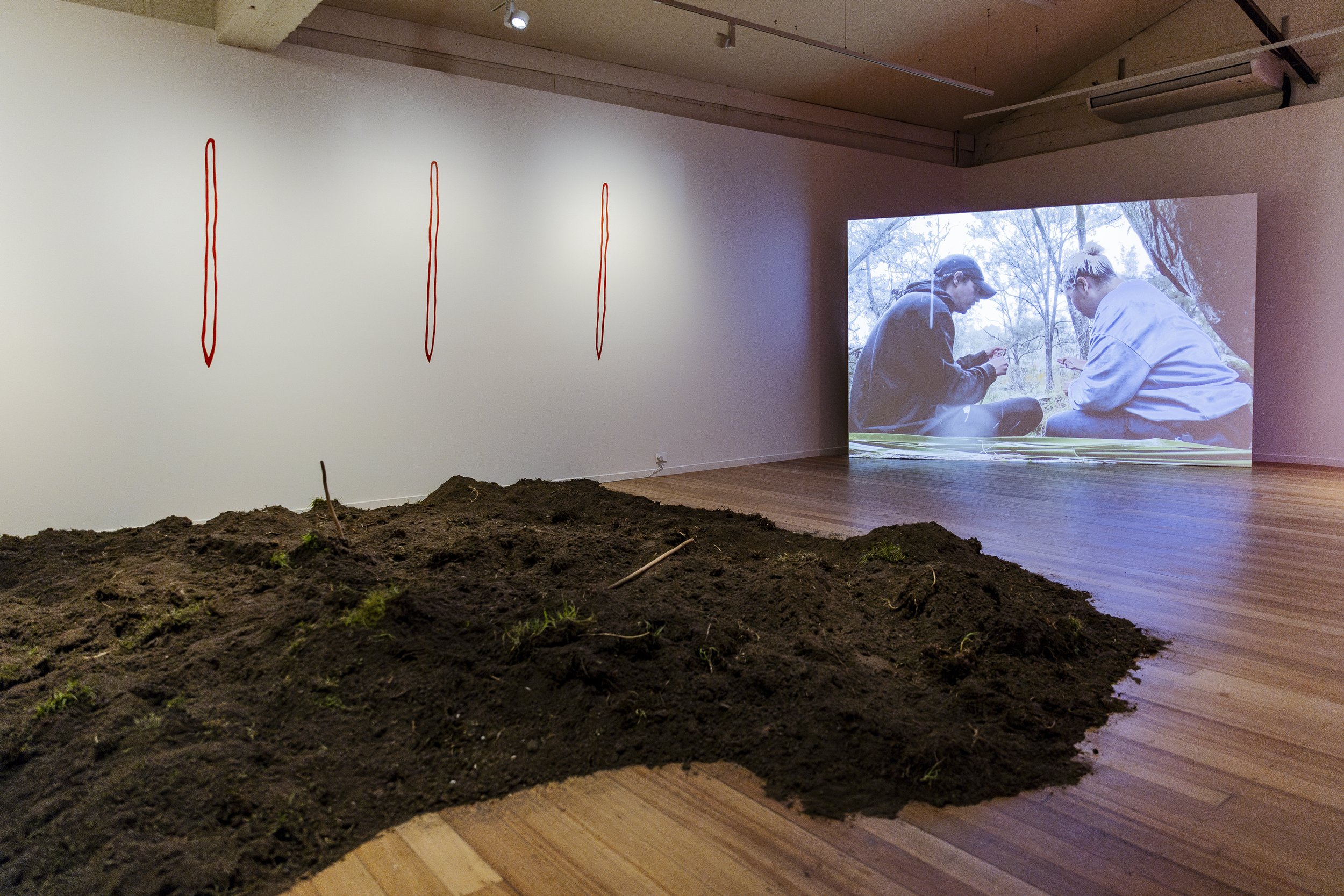WAYIRRA
Aboriginal Womens digging stick, soil, sound
Aboriginal women have utilised physical, spiritual and mental forms of weaponry to protect ourselves, our families and our woka (Country) for millennia. We carry the strength and embodied memories of our matriarchs through practices that manifest into protection. An example of this is our digging sticks which were predominantly used by women to dig for foods such as gona (root/s) which were an important vegetable source in the South-East. Digging encouraged plant production as the practice involved the turning over of soil and the thinning out of gona (root) clumps which was a significant regenerative practice. I use the practice of wayirra (to dig) understanding that this cultural practice enables plant production and knowledge production to happen. The knowledge production comes from recreating an important South-Eastern cultural material, the digging stick, which I learnt from my Uncle Leon Atkinson and my mum, Julie Andrews.
WAYIRRA is a site-specific work formed on the unceded lands of the Wurundjeri peoples. Incinerator gallery sits in close proximity to the significant waterway, the Maribyrnong River. In 1929 the incinerator was built to house furnaces which were used to burn Melbourne City’s waste. Three Eucalyptus trees were situated along the west-side of Incinerator Gallery until they were cut down at the beginning of 2024, turned into mulch and distributed across the landscape at the site. Through digging, WAYIRRA acknowledges that Country holds agency and through the powerful Aboriginal women’s practice of digging, this cultural agency cannot be owned nor governed.
Presented in These Arms Hold curated by Maya Hodge featuring works by Gabi Briggs, Indiana Hunt, Moorina Bonini and Tarryn Love at Incinerator Gallery 6th July - 8th September 2024.





